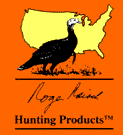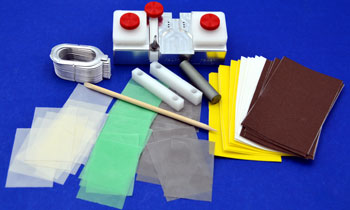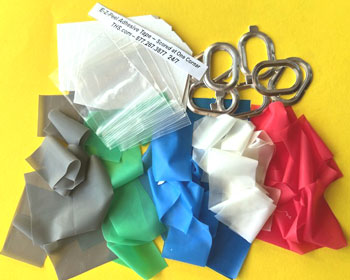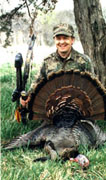Natural Blinds For Bow Hunters
Copyright © 1998 - 2024 Roger
W. Raisch * Nadine Adele, all rights reserved
Blinds Department
|
For those bow
hunters not willing to invest in a good full coverage Portable Camouflage Blind, , you need to know that your chances
of routinely bagging a spring gobbler with bow and arrow are slim. I'm not saying it can't be done without a blind, but the odds are
stacked against you big time.
|
You can try one of the
inexpensive blinds that shields your lower body, or try one of those lightweight blinds
that attaches to your bow. In the right situation, you may get a single shot at a
gobbler, but you won't get the second shot if you miss. And...most of the time the
bird will be alerted to your presence before you even get a chance to come to full draw.
|
But, there is
another alternative that will work sometimes... construction of a natural blind. Even with this approach, your odds are still only a fraction
compared to the full coverage blinds. Selecting the proper location for a natural
blind is the first order of business. In the fall, this should be within 30 yards
of the point where you scattered a flock. In the
spring, precise location is not as critical, but a good Strut Zone is preferable.
If you have roosted a spring gobbler, construct the blind after dark within 150 yards of
his roost tree. You must be close enough that the gobbler will come to your call,
but not so close that the noise you make building the blind spooks him. This is
where a good quality pair of Pruning
Shears comes in. The best types cut easily,
quietly and quickly, important points when you are within 150 yards of a gobbler on roost
on a quiet evening.
|
You need to select
an "ambush tree" before deciding on a location for the blind. The ambush tree should have a large diameter and perhaps have the
largest trunk of any tree in the area. This tree is critical because it is the
obstacle that you want the turkey to walk behind. When the bird goes behind it, you
will make your move to draw your bow. The larger the tree, the more time the bird
will be behind it, and the more time you will have to get to full draw.
|
After selecting an
ambush tree, choose a "blind tree" within 15 feet of the ambush tree. The size of this tree is not as important, but larger is
better. A small tree with a six-inch diameter is about the smallest that will
work. Your ground blind will be constructed around the blind tree. If the
blind tree is more than 15 feet from the ambush tree, a turkey may walk between the two
trees and you won't be able to draw without being seen.
|
After you have located the
blind site, gather as much natural vegetation as possible to build a shield of cover all
around the blind tree to a level as high as the top of your head while sitting on a
stool. Leave about a 6" opening facing the ambush tree. The more brush
the better. If you don't have brush available, you can use camo netting instead, but
it must be kept tight so that it doesn't flap in the wind and spook a turkey.
|
The most comfortable
position is to sit on a stool or bucket with your bow hanging on a hook with the arrow
pointed directly at the ambush tree. Sit on a good Seat Cushion. . Keep
your hands in shooting position. Use of a mouth call is mandatory for this type of
hunting, especially when a bird gets close. A Hen Decoy, or a
Feeding
Hen Decoy positioned near the ambush tree will help draw a gobbler to where you
want him. . Keep
your hands in shooting position. Use of a mouth call is mandatory for this type of
hunting, especially when a bird gets close. A Hen Decoy, or a
Feeding
Hen Decoy positioned near the ambush tree will help draw a gobbler to where you
want him.
|
When a bird approaches,
wait until he steps behind the ambush tree before drawing the bow. Wait until he
steps out and try to make a cool, calculated shot. It will be difficult.
Why? Because you may have had to wait for a minute or more before he stepped out,
you may have had to let down due to the wait, you may be uncomfortable, or you may have
turkey fever.
|
If your blind is
constructed correctly, and you remain motionless, some turkeys will cooperate and go
behind the tree. But, many won't and you won't get a shot at them even if they come
within easy bow range. My experience tells me that it
takes about 6 gobblers in at close range before one cooperates and steps behind the tree. And...you won't hit everyone you shoot at, maybe only 1 in
4. You do the math...6 X 4=24 gobblers called in before
one is bagged! Long odds my friends. This is why I
recommend and use a Portable
Cloth Blind exclusively for turkey hunting with bow and
arrow. If your budget is low, like most of us, try building a Portable Cloth Blind with my Construction Blueprints... You'll save plenty of $$.
|
Don't give up bow hunting
turkeys if you decide not to use a portable blind. Build natural blinds in several
good strut zones for spring gobbler hunting. Just remember....you may need to work about 24 gobblers before you
score! |
| |
| |
|











